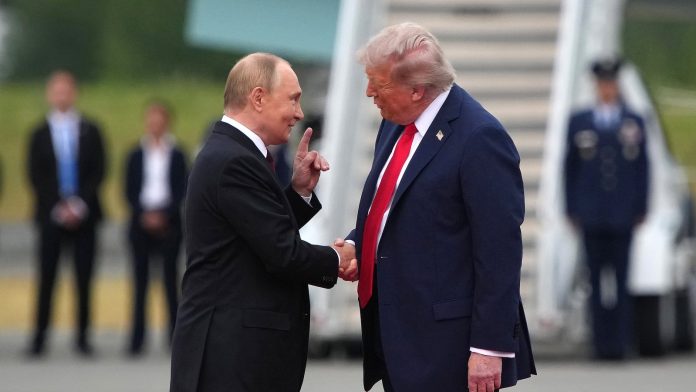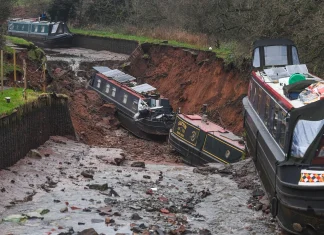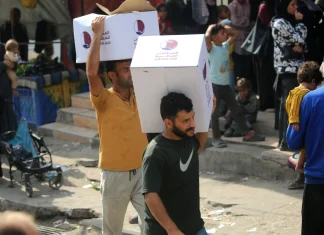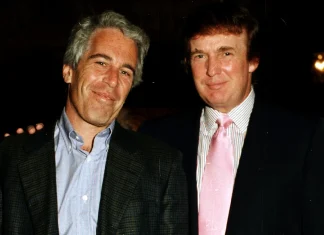A Surprising Turn in Alaska: How a Quiet Summit Shifted the Course of the Ukraine Conflict
In the frosty air of Anchorage, Alaska, an unexpected chapter in international diplomacy quietly unfolded, one that could ripple far beyond the icy backdrop where it took place. What was billed as a high-profile summit between two formidable world leaders—Russian President Vladimir Putin and former US President Donald Trump—ended not with the bombshell deals or fiery rhetoric one might anticipate, but with a subtle, yet seismic, reshaping of the global conversation about the war in Ukraine.
For Putin, this meeting was nothing short of a diplomatic victory, a chess move masterfully played on the cold global stage. Just a week before, the United States had threatened sanctions and secondary tariffs targeting Russia and its trade partners—a clear signal of rising international pressure. But today, we see those threats quietly shelved, with Moscow emerging largely unscathed and, more astoundingly, seemingly holding the reins of peace talks.
The New Peace Playbook: Skip the Ceasefire, Go Straight to Peace
Perhaps the most striking outcome was a paradigm shift in the approach to ending the war: a move away from the long-established insistence on a ceasefire as a prerequisite for peace negotiations, toward direct talks aimed at a comprehensive peace agreement.
Donald Trump’s remarks on Truth Social encapsulated this pivot: “The best way to end the horrific war between Russia and Ukraine is to go directly to a Peace Agreement, which would end the war, and not a mere Ceasefire Agreement.” This declaration upends the diplomatic orthodoxies shared by the United States, Ukraine, and the European Union, where ceasefires have been deemed essential to establish trust and reduce hostilities before tackling thorny matters like territorial disputes.
Putin, who opposed US ceasefire proposals earlier this spring, appears to have convinced Trump that a ceasefire was unnecessary—a remarkable concession that breaks ranks with months of Western diplomatic strategy.
For those watching closely, this raises profound questions: Can peace truly be forged in the absence of a ceasefire? Or does this risk dragging the conflict into deeper uncertainty? Ukraine’s President Volodymyr Zelensky is now under mounting pressure to enter talks under this new framework, with his upcoming Washington visit set to test the resilience of Ukrainian resolve amid shifting Western priorities.
Europe’s Uneasy Position: Between Past Consensus and New Realities
The European Union, steadfast in its stance last week with all members save Hungary endorsing meaningful negotiations only in the context of a ceasefire, now finds itself navigating turbulent waters. The UK shares this position, continuing to emphasize the need for a reduction of hostilities before peace talks.
But with Trump’s abrupt volte-face and the US administration’s apparent embrace of Russia’s agenda, European leaders face a diplomatic quandary. They must either accept this new trajectory or risk alienating Washington in an already fraught geopolitical landscape.
In a joint statement, leaders from France, Germany, Italy, Poland, and Finland, alongside European Commission President Ursula von der Leyen and European Council President António Costa, expressed a shared commitment to Ukraine’s sovereignty, insisting:
- Ironclad security guarantees for Ukraine to defend its territorial integrity
- No limitations on Ukraine’s armed forces or cooperation with third countries
- Rejection of any Russian veto over Ukraine’s path toward EU and NATO membership
This united stance underscores Europe’s bottom line: the inviolability of borders and Ukraine’s right to self-determination, red lines that Russia vehemently opposes and that Putin reiterated in Alaska with a pointed caution to Europe against “throwing a wrench in the works.”
Security Guarantees: The New Focal Point
The elimination of the ceasefire as a condition for peace talks spotlights a critical question—what sort of security guarantees will Ukraine receive moving forward?
Here, the spotlight turns to NATO’s Article 5, which pledges collective defense to member states, but Ukraine remains a non-member. Italian Prime Minister Giorgia Meloni’s proposal to extend a similar guarantee to Ukraine has stirred debate, with reports suggesting that Putin might have tentatively agreed to a non-NATO Article 5 arrangement. A diplomatic source told AFP that this “supposed” agreement arose from the Trump-Putin meeting, but the mechanics and sincerity remain shrouded in uncertainty.
Why might Russia accept what seems an anathema to its stated goal of blocking Ukraine’s NATO ambitions? It is unknown—but the ambiguous diplomacy reveals the tangled web of concessions and posturing involved.
Veteran analyst Elena Markova of the European Institute for Peace weighed in: “Security guarantees without a ceasefire are a double-edged sword. They can deter further Russian advances, but without a calm on the ground, they risk entrenching divisions.”
Behind the Scenes: A Summit Focused on Business, Not War
The public air of cordiality—Putin and Trump sharing laughs on stage, a surprisingly warm atmosphere—belied the underlying stakes. Rather than tackling Ukraine head-on, much of the summit felt like a nostalgic nod to shared history, as Putin delivered a rambling reflection on Alaska’s Russian roots and wartime cooperation, leaving many wondering why Alaska was a venue at all.
Questions from the press were notably absent in the 12-minute press conference, a sign that transparency was not on the agenda. Instead, Putin reiterated his familiar narrative blaming Western powers for the conflict, while Trump’s firm promise of “very severe consequences” for Russia seemed to vanish into thin air.
The absence of talks on nuclear arms control, despite Putin’s earlier mention, sealed the sense that this gathering was more about symbolism than substantive progress—although the acceptance of direct peace talks sans ceasefire represents a notable shift.
What Does This Mean for Ukraine and the World?
For Ukraine, the implications are profound. The path to peace has abruptly shifted, and the very foundation of prior diplomatic efforts—mutual cessation of hostilities before negotiations—has been cast aside by its most powerful ally’s former leader.
Will this bolster Ukraine’s chances for a swift resolution, or does it risk further destabilizing an already fragile situation? As historian Dr. Samuel Liu observed, “Leaping ahead to peace talks without pause can be a gamble. Peace is not merely a signature; it requires conditions that allow all players to come to the table in good faith.”
Globally, this development underscores the complexity of international alliances and the precariousness of diplomatic consensus. It also highlights the often opaque influence of personalities and informal channels in shaping big geopolitical outcomes.
As citizens of a turbulent world, we might ask ourselves: How do we balance the urgent desire for peace with the realities of war? Can peace persist without trust and security? And what role do powerful nations play in safeguarding or subverting that fragile balance?
Looking Ahead
The Alaska summit didn’t end the war, nor did it produce immediate treaties. But it did shift the conversation dramatically. As Zelensky heads to Washington, European leaders recalibrate, and Putin watches closely, the world faces a renewed uncertainty—a moment that calls for vigilance, empathy, and critical reflection on the nature of peace and power in the 21st century.
One thing is clear: the story of Ukraine remains unwritten, and the summit in Alaska is a reminder that diplomacy is never just about the grand gestures, but the subtleties of influence, timing, and the relentless human longing for peace in the shadow of conflict.










